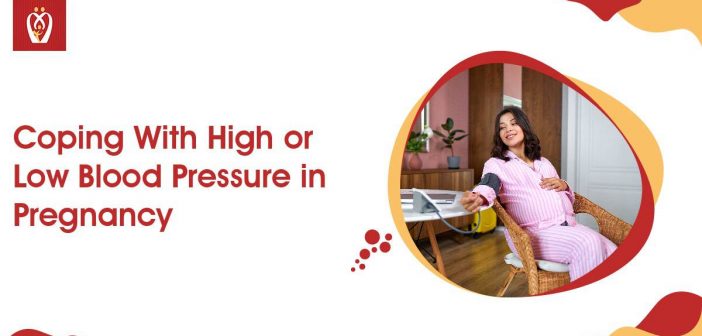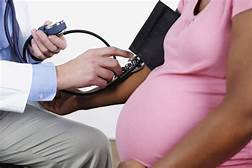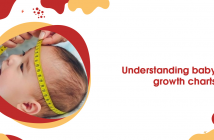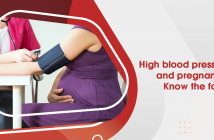High blood pressure (also known as hypertension) needs a complete management approach during pregnancy, just as it does at any other time. Low blood pressure (hypotension), whether during or after pregnancy, is less likely to be a cause for concern but will still be monitored.
Your GP will work with you to keep your blood pressure issues in check. And keep you and your growing baby safe whether your blood pressure condition existed before or developed during pregnancy (gestational). You can immediately book an appointment with your GP/midwife with the Nurturey pregnancy app.
Your health care provider will closely monitor your blood pressure throughout pregnancy and treat your specific condition as needed, regardless of the cause. The typical causes of high and low blood pressure in pregnancy, including preeclampsia, a severe high blood pressure condition, are discussed below. Also, we will discuss risk factors, symptoms, treatment options, and coping strategies.
About Nurturey
The PinkBook by Nurturey is a “digital substitute” for the NHS’s Red Book. Pregnant women and parents can use the PinkBook to access their child’s health records, view upcoming health checkups, and get trusted information about their stage in the parenting or pregnancy journey directly from the NHS. If you are pregnant and have concerns, you can easily use the Nurturey pregnancy app to book an appointment with your GP/midwife. You can also schedule appointments, reorder prescriptions, and communicate with your GP.
High Blood Pressure
Pregnancy hypertension is a severe condition your general practitioner will monitor at each prenatal visit. Preeclampsia can develop from gestational high blood pressure and chronic hypertension (high blood pressure before 20 weeks gestation).
Symptoms
The following symptoms are common to all types of high blood pressure:
- Dizziness
- Headaches
- Lightheadedness
- Pounding feeling in the head or chest
Other times, there are no discernible symptoms other than a high blood pressure reading. That is why it’s necessary to have regular prenatal exams to have your blood pressure routinely checked. High blood pressure or a sudden increase in blood pressure can be dangerous to the mother and baby.
Preeclampsia
Preeclampsia, a severe pregnancy complication that causes elevated blood pressure, is most often caused by high blood pressure during pregnancy. It can also harm other organ systems, such as the liver and kidneys.
Preeclampsia differs from the usual high blood pressure because it happens only during pregnancy. This condition can be diagnosed with otherwise normal blood pressure levels in women. Also, it usually goes away after the postpartum period, just like gestational hypertension.
Preeclampsia usually develops after 20 weeks of pregnancy. If untreated, it can lead to complications such as stillbirth, premature birth, and even death for the mother.
Symptoms
Besides developing high blood pressure after week 20, the following are some of the more common symptoms of preeclampsia:
- Abdominal pain, usually on the right side of the abdomen
- Blurred vision, temporary blindness, or light sensitivity
- Decrease in urine output
- Breathing difficulties
- Protein excretion in the urine
- Frequent severe headaches than usual or don’t go away
- Vomiting or nausea
- Rapid weight gain
- Face and hand swelling
Monitoring changes in blood pressure throughout pregnancy becomes more important because some women have no symptoms of preeclampsia (or gestational hypertension).
Moreover, while rare, some women develop preeclampsia after delivery, usually within 48 hours, but it can occur within six weeks. It is known as postpartum preeclampsia. It has the same symptoms as preeclampsia, and the treatment is the same.
Preeclampsia treatments depend on chronic hypertension protocols discussed below.
Chronic Hypertension
Chronic hypertension is high blood pressure that usually happens before the 20-week mark. Your GP will most likely evaluate your readings to determine whether it’s the chronic or gestational stage.
The American Heart Association classifies blood pressure into five categories, including three stages of hypertension:
Normal: Systolic levels below 120 mmHg and diastolic levels below 80 mmHg.
Elevated: Systolic levels of 120-129 mmHg and diastolic levels of less than 80 mmHg
Stage 1 Hypertension defines systolic pressures ranging from 130 to 139 mmHg or diastolic pressures ranging from 80 to 89 mmHg.
Stage 2 Hypertension defines systolic blood pressure of 140 mmHg or higher or diastolic blood pressure of 90 mmHg or higher.
Stage 3 Hypertensive crisis (see your GP right away) defines systolic pressures greater than 180 mmHg or diastolic pressures greater than 120 mmHg
Your GP will take your blood pressure at each prenatal visit and record it to compare to previous readings. In stage 3, you will require immediate medical attention because it can lead to a hypertensive crisis or complications such as organ failure, a heart attack, or a stroke.
Your GP may ask you to monitor your blood pressure frequently at home if you fall into hypertension categories (stage 1 or 2) or have high blood pressure. It is also the same for those who have been diagnosed with preeclampsia.
High Blood Pressure Complications
While many women with pre-pregnancy hypertension do well. There are some potential complications you may experience. You and your general practitioner will develop a plan to manage your symptoms. Women with chronic or gestational hypertension may also develop preeclampsia during the second or third trimester. Additionally, these are some of the more prevalent issues linked to high blood pressure during pregnancy:
- If you have hypertension before pregnancy, you have a 20% to 30% chance of developing superimposed preeclampsia.
- Increased risk of premature birth
- Increased risk of fetal growth problems, which may result in low birth weight
- Women underlying kidney problems are at an even higher risk of blood pressure complications during pregnancy.
Treating High Blood Pressure
Women with high blood pressure before pregnancy can manage their symptoms of hypertension through medication and lifestyle changes, similar to the treatment in non-pregnant patients. These are the same treatments used to treat preeclampsia. Treatment for high blood pressure during pregnancy includes, in addition to medication:
- Consuming a nutritious diet high in fruits and vegetables, lean protein, and complex carbohydrates
- Limiting sodium
- Regular exercise
- Limiting weight gain if overweight
- Controlling stress levels
- Avoiding alcohol
- Quitting smoking
Other options for treatment can be bed rest and labor induction if high blood pressure becomes uncontrollable and does not respond to medication or lifestyle changes. GPs may consider inducing labor if a woman’s blood pressure is too high and her baby is viable when close to full term.
Low Blood Pressure
A regular blood pressure reading is less than 120 mm Hg systolic and 80 mm Hg diastolic. There is no official barometer for distinguishing “low” blood pressure, and lower readings are usually a good thing within limits.
Blood pressure is normal during pregnancy, especially during the first 24 weeks or if you have had low blood pressure before becoming pregnant. Low blood pressure is generally not a cause for concern unless symptoms accompany it.
Low Blood Pressure Complications
While many women with low blood pressure before and during pregnancy have no complications, there are a few to keep in mind. (Pregnancy)
Low blood pressure symptoms include:
- Vision impairment
- Cold, clammy skin that is pale
- Dehydration and excessive thirst
- Depression
- Feeling dizzy or lightheaded
- Fatigue
- Inability to concentrate
- Nausea
- Breathing too quickly or too shallowly
Dizziness is one of the most concerning complications because it can lead to fainting, falling, and injury because of the fall. Also, research has found a link between low blood pressure and increased morning sickness symptoms.
Treating Low Blood Pressure
The main goal of treating low blood pressure during pregnancy is symptom reduction, especially if you are dizzy or fainting. Many people can manage their symptoms with simple lifestyle changes such as:
- Keeping hydrated
- Getting enough calories to sustain you and your baby
- Avoid standing for extended periods.
- Slowly rising from a prone or supine position to a standing position.
It’s crucial to move positions slowly to avoid dizziness or fainting because blood pressure is lower when a person rests and can cause blood to pool in the legs.
The Bottom Line
Make a preconception appointment with your GP and discuss any complications or concerns about conception and pregnancy if you have low or high blood pressure before pregnancy. It is also an excellent time to work together on a strategy to help manage your symptoms if you become pregnant.
The same is true if you develop low or high blood pressure (including preeclampsia) while pregnant. To keep you and your baby safe, you should work with your GP to effectively manage your symptoms.








